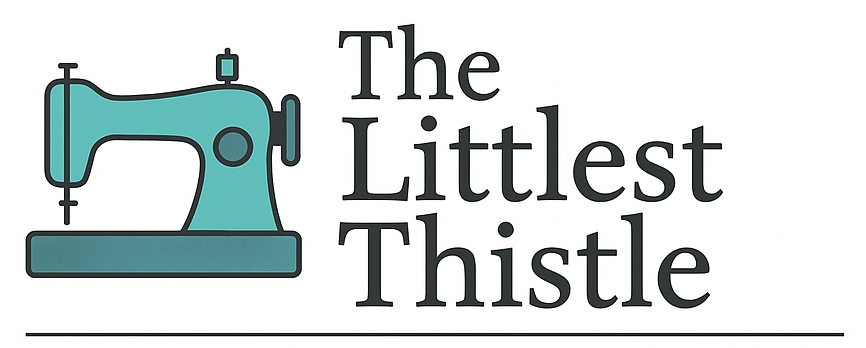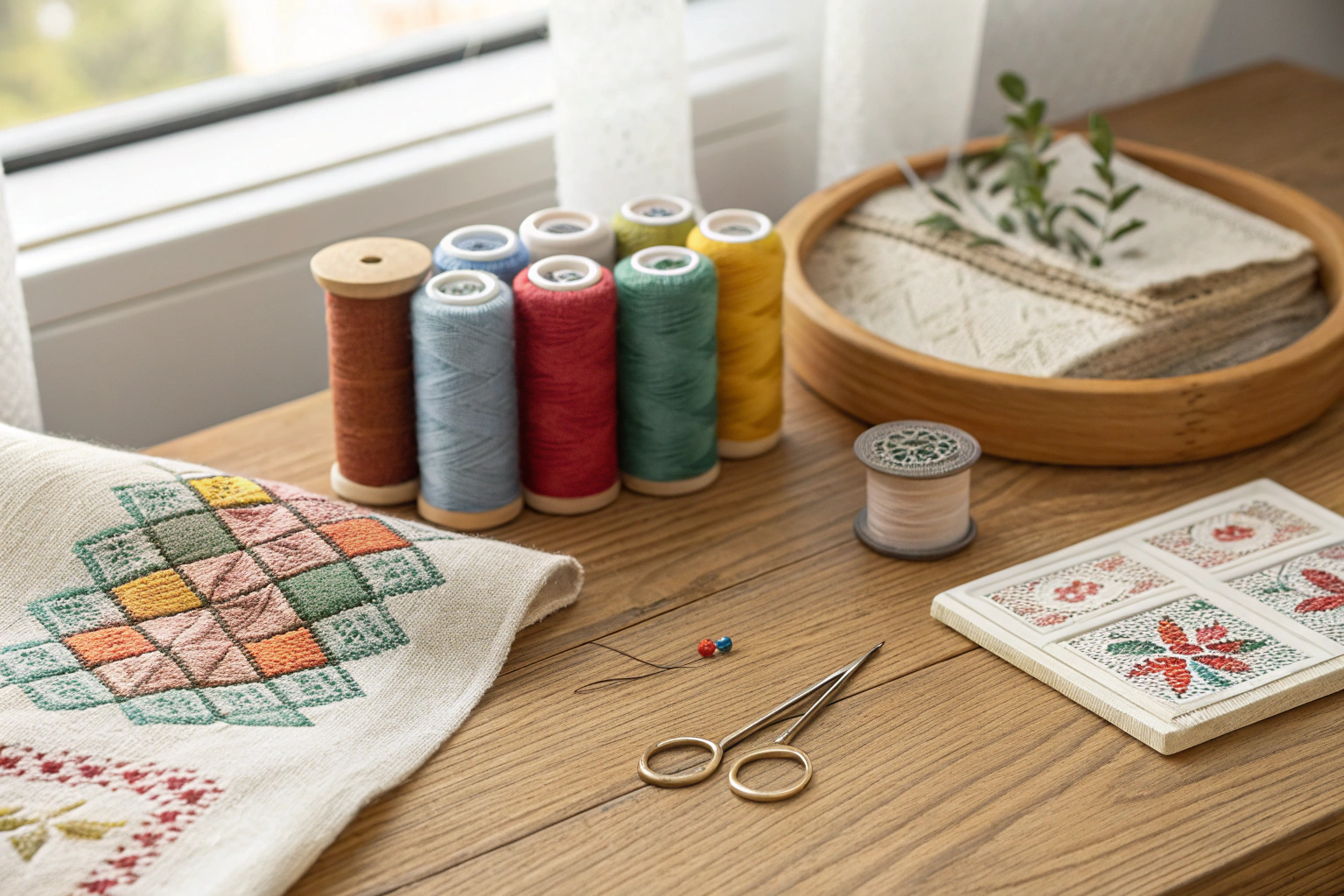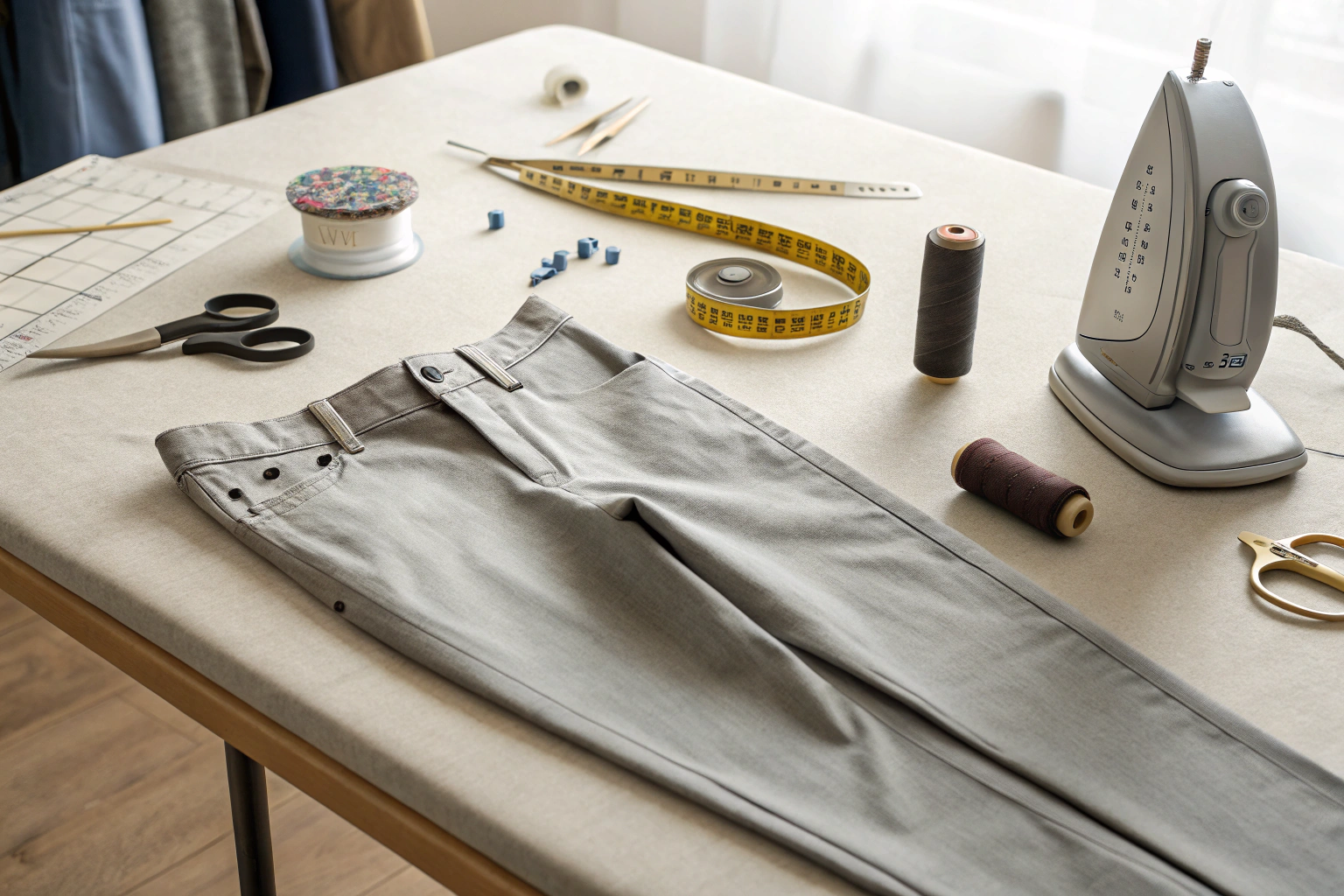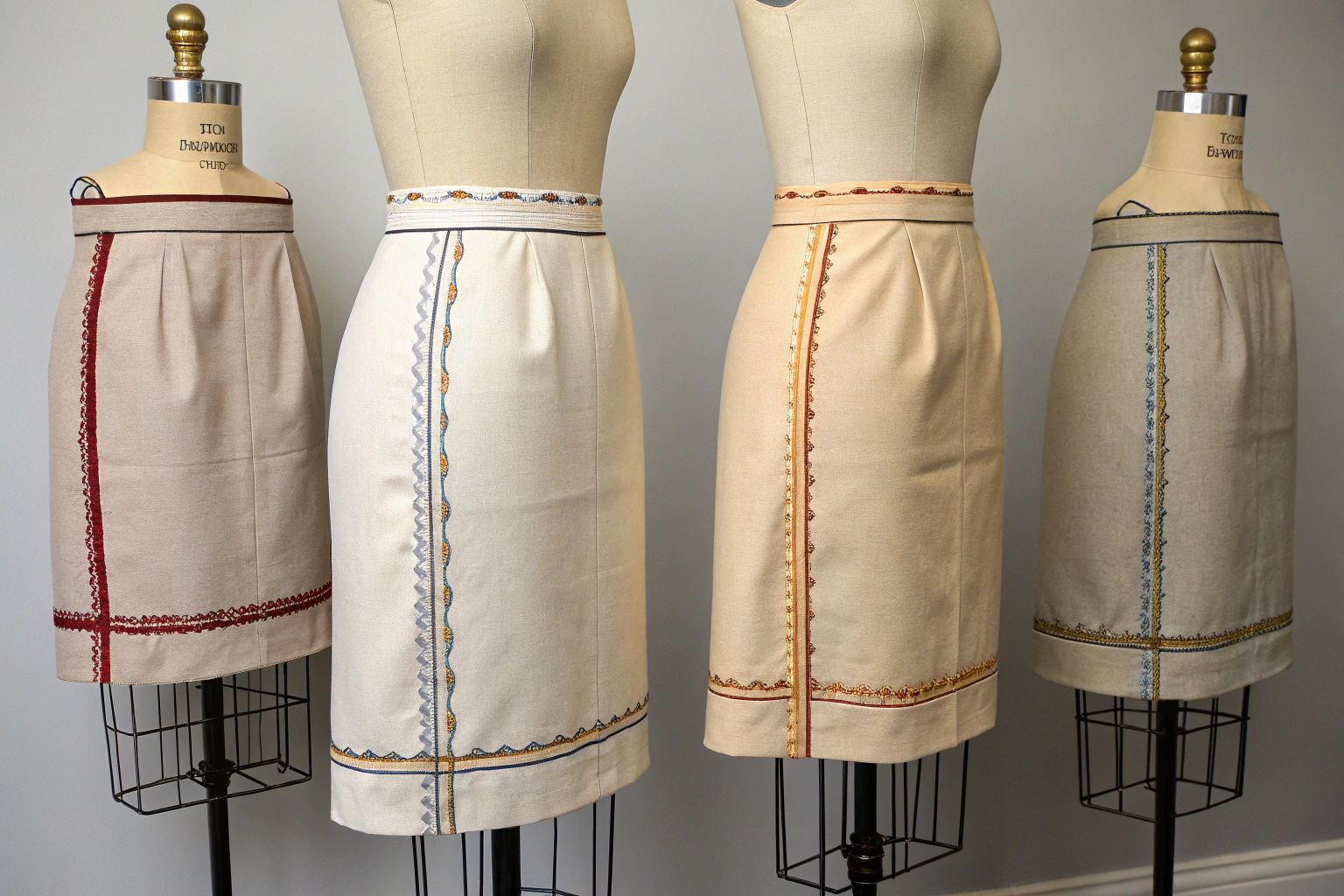Hand sewing stitches are the fundamental techniques used to join, mend, or embellish fabric with just a needle and thread. Different stitches, such as the running stitch and backstitch, offer varying levels of strength, flexibility, and visibility for specific tasks. Learning these foundational skills is essential for everything from quick clothing repairs to intricate decorative projects, helping you create durable seams and avoid common issues like fabric puckering or loose threads, ultimately extending the life of your garments.
Key Benefits at a Glance
- Quick Repairs: Easily fix a popped button, split seam, or fallen hem anywhere, saving clothes from the discard pile and reducing tailor costs.
- No Machine Needed: Accomplish strong, durable mending without expensive equipment, making it an accessible skill for everyone, regardless of space or budget.
- Total Control: Achieve precise results in tight corners, on delicate fabrics, or when attaching details like lace and beads where a machine would be too clumsy.
- Portable & Relaxing: Sew quietly while traveling, watching TV, or waiting for an appointment. It’s a mindful activity that requires minimal supplies and no electricity.
- Creative Freedom: Use decorative stitches like the blanket or chain stitch to embellish garments, personalize gifts, and add unique artistic flair to any textile project.
Purpose of this guide
This guide is designed for beginners and anyone needing a refresher on essential mending and crafting skills. It solves the common problem of feeling helpless when clothes rip or hems fall, empowering you to make repairs without a sewing machine. Here, you will learn the most versatile hand sewing stitches, understand their specific uses for strength or invisibility, and gain the confidence to tackle common projects. We’ll provide clear guidance to help you avoid mistakes like messy knots or uneven tension, ensuring you can achieve neat, long-lasting results on your own.
Master these 10 essential hand sewing stitches an expert’s complete guide
After teaching hand sewing for over fifteen years, I’ve watched countless students transform from complete beginners into confident needleworkers. The journey always starts with the same foundation: mastering essential hand sewing stitches that form the backbone of all needlework. Whether you’re mending a favorite garment, creating custom embellishments, or diving into traditional embroidery, these fundamental techniques will serve you throughout your crafting journey.
In our machine-dominated world, many assume hand sewing is obsolete. Yet I consistently find that my most accomplished students rely on hand techniques for precision work that machines simply cannot achieve. The portability, control, and versatility of hand sewing make these skills invaluable for modern sewers.
- Master 10 essential hand stitches that form the foundation of all needlework
- Learn proper tool selection and needle-thread-fabric compatibility
- Develop skills transferable to mending, embroidery, quilting, and custom garments
- Gain precision techniques for delicate fabrics and tight spaces where machines can’t reach
- Create professional-quality finishes with invisible seams and clean edges
Why mastering hand sewing stitches matters in the machine age
Despite the efficiency of modern sewing machines, hand sewing remains irreplaceable for specific applications. My philosophy centers on choosing the right tool for each task, and frequently, that tool is a simple needle and thread. Hand sewing offers unmatched portability – you can repair a hem in a hotel room or add decorative touches during your commute.
The precision control achievable through hand sewing surpasses machine capabilities in many situations. When working with delicate fabrics like vintage silks or modern performance materials, the gentle touch of hand stitching prevents damage that machine feet might cause. Additionally, hand sewing serves as the foundation for artistic expression through embroidery, where each stitch becomes a brushstroke in textile art.
- Delicate fabrics like silk and lace that require gentle handling
- Tight spaces and curved seams where machines cannot maneuver
- On-the-go repairs and travel sewing without electricity
- Precision work requiring exact stitch placement
- Invisible mending and alterations on finished garments
- Custom embellishments and decorative details
“A recent survey found that 72% of handmade garment sewists use at least three different hand stitching techniques regularly, with the running stitch, backstitch, and slip stitch being the most common.”
— Textile Institute Journal, July 2024
Source link
Essential tools for hand sewing success
Building a comprehensive hand sewing toolkit requires understanding the relationship between needles, threads, and fabrics. Over years of teaching, I’ve refined my personal toolkit to include only the most versatile and reliable tools. Quality matters significantly in hand sewing – a sharp needle glides effortlessly through fabric, while a dull one creates frustration and poor results.
Sewing needles come in various types, each engineered for specific tasks. Sharps work best for general sewing on woven fabrics, while ballpoint needles prevent runs in knit materials. Needle sizes range from 1 (largest) to 12 (finest), with most hand sewing falling in the 8-11 range. The needle eye must accommodate your chosen thread without being so large that it creates visible holes in delicate fabrics.
Thread selection impacts both the appearance and durability of your stitching. Cotton threads work beautifully with natural fabrics and provide a traditional finish, while polyester threads offer superior strength and colorfastness. The optimal thread length for hand sewing measures 18-24 inches – longer lengths increase tangling, while shorter pieces require frequent rethreading.
| Needle Type | Best Uses | Fabric Types | Key Features |
|---|---|---|---|
| Sharps | General sewing, seaming | Woven cottons, linens | Medium length, sharp point |
| Betweens | Quilting, fine work | Multiple layers, dense fabrics | Short length, precise control |
| Embroidery | Decorative stitching | All weights | Large eye for multiple threads |
| Ballpoint | Knit fabrics | Stretch materials | Rounded tip prevents snags |
| Heavy Duty | Thick materials | Denim, canvas, leather | Strong shaft, large eye |
- Essential: Sharp fabric scissors, seam ripper, thimble, needle case
- Essential: Variety pack of needles (sizes 8-12), quality thread spools
- Essential: Small ruler or gauge, fabric marking tools
- Nice-to-have: Thread snips, magnetic pin cushion, needle threader
- Nice-to-have: Embroidery hoop, specialty threads, beeswax for thread
Choosing the right needle and thread combinations
The most critical aspect of successful hand sewing lies in properly matching your needle size to your thread weight and fabric type. I learned this lesson painfully during my early sewing years when I attempted to use heavy upholstery thread with a delicate size 12 needle. The needle bent, the thread shredded, and my frustration peaked.
Understanding fabric composition guides tool selection. Natural fibers like cotton and linen pair beautifully with cotton threads and sharp needles. Synthetic fabrics often require polyester threads for compatible stretch and recovery. Knit fabrics demand ballpoint needles to slip between fibers rather than piercing them.
Thread weight numbers work inversely – higher numbers indicate finer threads. A 60-weight thread appears much thinner than 30-weight. Match fine threads with smaller needle eyes to prevent the thread from sliding around, while heavier threads require larger eyes for smooth passage.
| Fabric Type | Needle Size | Thread Weight | Thread Type |
|---|---|---|---|
| Lightweight cotton | 9-11 | 50-60 | Cotton or polyester |
| Medium cotton/linen | 8-10 | 40-50 | Cotton or polyester |
| Heavy denim/canvas | 6-8 | 30-40 | Polyester or heavy cotton |
| Silk/delicate fabrics | 10-12 | 60-80 | Silk or fine polyester |
| Knit/stretch fabrics | 9-11 ballpoint | 50-60 | Polyester with stretch |
Getting started preparation and fundamental techniques
Proper preparation sets the foundation for successful hand sewing. Through years of teaching, I’ve developed a consistent preparation routine that eliminates common problems before they occur. This methodical approach might seem excessive initially, but it prevents frustration and ensures professional results.
Workspace preparation impacts your comfort and accuracy significantly. Position yourself in good lighting with your work at a comfortable height. I prefer natural daylight or full-spectrum LED lighting to accurately assess thread colors and stitch placement. Keep your tools within easy reach – nothing disrupts concentration like searching for scissors mid-project.
Thread preparation involves more than simple cutting. The optimal length prevents tangling while minimizing rethreading interruptions. I teach students to measure from fingertips to elbow – approximately 18-24 inches for most people. Some sewers benefit from running thread through beeswax to strengthen it and reduce tangling, particularly when working with cotton threads on rough fabrics.
- Cut thread to 18-24 inches (arm’s length) to prevent tangling
- Thread needle and tie secure knot at thread end
- Press fabric and mark any guidelines or seam lines
- Position work in good lighting with comfortable hand support
- Test stitch tension and spacing on fabric scrap first
How to thread a needle and tie secure knots
Threading a needle seems simple until you’re struggling with fraying thread and a tiny eye. I’ve developed a foolproof method that works consistently, even in poor lighting conditions. The key lies in preparing the thread end properly and maintaining steady hands.
Cut your thread cleanly with sharp scissors – ragged ends catch on the needle eye and refuse to pass through. Hold the needle steady in your non-dominant hand while bringing the thread to the eye from the front. Many people make the mistake of moving the needle toward the thread, which creates unnecessary difficulty.
For knot-tying, consistency matters more than perfection. A secure knot anchors your stitching without creating bulk that shows through the fabric. I prefer the finger-wrap method because it creates uniform knots that sit flat against the fabric surface.
- Cut thread cleanly at an angle for easier threading
- Hold needle steady and bring thread to eye from front
- Pull 3-4 inches of thread through needle eye
- Wrap long thread end around index finger twice
- Roll wrapped thread off finger while pinching to form knot
- Pull knot tight and trim excess thread tail
How to make a stitch sampler
Creating a stitch sampler serves multiple purposes in your hand sewing education. This practice piece allows you to master each technique without the pressure of working on a finished project. I require all my students to complete samplers because they provide an excellent reference for future projects and demonstrate progress over time.
Choose cotton muslin or linen for your sampler fabric – these materials provide even weave and clear stitch visibility. The neutral color shows thread colors accurately while the stable weave prevents distortion during practice. Cut your fabric to approximately 12×16 inches, providing ample space for all ten stitches with room for notes.
Plan your sampler layout before beginning. I recommend creating a grid system with each stitch occupying its own section. This organization helps you compare techniques and maintains neat appearance. Use different thread colors for each stitch to enhance visibility and create an attractive finished piece.
- 12×16 inch cotton muslin or linen fabric
- Variety of thread colors for visibility
- Sharp pencil or fabric marker for guidelines
- Ruler for measuring stitch spacing
- Embroidery hoop (optional for tension control)
Foundation stitches every sewer should know
Foundation stitches form the structural backbone of hand sewing. These three techniques – running stitch, backstitch, and basting – provide solutions for the majority of hand sewing needs. Mastering these stitches thoroughly before advancing to specialized techniques ensures solid fundamentals that support more complex work.
Each foundation stitch serves specific purposes within the broader categories of structural, temporary, and finishing techniques. Understanding when to use each stitch comes through practice and experience, but general guidelines help beginners make appropriate choices. Speed of execution varies significantly between stitches, making some better suited for large areas while others excel in detailed work.
- Running Stitch: Quick basting and gathering, beginner-friendly
- Back Stitch: Strong structural seams, machine-like appearance
- Basting Stitch: Temporary holding for fitting and alignment
For more on widely used sewing techniques, review the hand sewing article.
The running stitch your first and most versatile stitch
The running stitch holds the distinction of being both the simplest and most versatile hand sewing technique. I always begin teaching with this stitch because success builds confidence while the basic in-and-out motion establishes proper hand positioning and rhythm. Despite its simplicity, the running stitch serves numerous purposes from temporary basting to decorative topstitching.
Technique execution involves weaving the needle in and out of the fabric in regular intervals. The ideal stitch length ranges from 1/8 to 1/4 inch, depending on your fabric weight and intended use. Consistency matters more than perfection – even spacing creates professional appearance while irregular stitches appear homemade.
The running stitch’s primary strength lies in its speed and versatility. You can complete long seams quickly, though the resulting connection offers only moderate strength. This characteristic makes running stitches perfect for basting and gathering, where temporary holding or fabric manipulation takes priority over durability.
- Insert needle from front to back through fabric
- Bring needle up 1/8 to 1/4 inch forward
- Continue weaving needle in and out in even intervals
- Keep stitches and spaces between them equal in length
- Pull thread gently to avoid puckering fabric
The backstitch creating strong secure seams
The backstitch represents the workhorse of hand sewing, providing strength that rivals machine stitching. When students ask which stitch to use for permanent seams, I invariably recommend the backstitch. Its backward-then-forward motion creates overlapping stitches that prevent seam failure under stress.
Learning the backstitch requires more coordination than the running stitch, but the results justify the effort. Each stitch begins by inserting the needle one stitch length behind your current position, then emerging two stitch lengths forward. This creates continuous lines of stitching with no gaps between individual stitches.
The backstitch consumes more thread than other techniques due to its overlapping nature, but this “waste” translates directly into superior strength. I discovered this during my early garment-making attempts when running-stitched seams failed during normal wear, while backstitched seams remained intact for years.
- Make first stitch forward, then insert needle one stitch length back
- Bring needle up two stitch lengths forward from starting point
- Insert needle back at the end of previous stitch
- Continue pattern: forward two, back one for continuous line
- Keep stitch length consistent for professional appearance
The basting stitch temporary holding made easy
Basting stitches serve as the unsung heroes of complex sewing projects. These temporary stitches hold fabric pieces in precise alignment during fitting and construction, preventing costly mistakes and ensuring professional results. I learned to appreciate basting after ruining an expensive silk blouse by skipping this crucial step.
Basting technique uses longer running stitches, typically 1/2 to 1 inch in length, with loose tension for easy removal. The extended stitch length speeds installation while the loose tension prevents permanent impressions in delicate fabrics. Always use contrasting thread colors for easy identification and removal after permanent stitching.
Professional judgment determines when basting becomes essential versus optional. Simple projects with straight seams rarely require basting, while complex garments with multiple pattern pieces, curves, or matching details benefit enormously from this temporary holding system.
- Complex garment construction with multiple pattern pieces
- Matching plaids, stripes, or patterns across seams
- Fitting adjustments before permanent stitching
- Gathering or easing fabric into curves
- Holding layers together for quilting or appliqué
- Use longer running stitches (1/2 to 1 inch length)
- Keep stitches loose to allow for easy removal
- Use contrasting thread color for visibility
- Remove basting stitches after permanent seaming
- Leave thread tails long for easy pulling
Intermediate stitches for finishing and detail work
Advancing beyond foundation stitches opens doors to professional-quality finishes that distinguish handmade items from homemade attempts. These intermediate techniques require more skill and patience but reward sewers with results that rival commercial construction. I remember the satisfaction of completing my first invisible hem – the achievement felt like unlocking a professional secret.
Finishing stitches serve dual purposes: preventing fabric deterioration and enhancing visual appeal. Raw edges fray over time without proper treatment, leading to premature garment failure. Additionally, visible raw edges create an unfinished appearance that immediately identifies amateur construction.
The learning curve for intermediate stitches steepens compared to foundation techniques, but persistence pays dividends. Students often struggle initially with achieving consistent spacing and tension, but muscle memory develops through practice. I encourage beginners to practice on scraps before attempting these stitches on finished projects.
- Overcast Stitch: Prevents fraying, finishes raw edges cleanly
- Slip Stitch: Creates invisible seams and hems
- Blanket Stitch: Decorative edge finishing with functional benefits
“According to the 2025 National Sewing Report, 84% of participants identified learning versatile hand stitches like the catch stitch and blanket stitch as essential for both garment repair and creative embellishments.”
— American Sewing Guild, February 2025
The overcast stitch clean edges and preventing frays
The overcast stitch provides the most straightforward solution for finishing raw edges on woven fabrics. This diagonal whipping motion encases cut edges, preventing the inevitable fraying that occurs with wear and washing. I particularly value this technique for its simplicity and effectiveness on fabrics prone to raveling.
Fabric compatibility varies significantly with the overcast stitch. Woven fabrics with loose weaves benefit most from this treatment, while tightly woven materials may not require edge finishing. Natural fibers like cotton and linen respond beautifully to overcast finishing, while synthetic fabrics sometimes resist fraying enough to skip this step.
Proper spacing ensures both effectiveness and appearance. Stitches placed too far apart allow fraying between attachment points, while overly close spacing wastes time and creates bulk. I aim for spacing that allows the thread to lie flat without overlapping while providing complete edge coverage.
- Insert needle from back to front near fabric edge
- Bring thread over edge diagonally to back side
- Insert needle from back to front again, 1/8 inch forward
- Continue wrapping thread over edge with consistent spacing
- Keep stitches close together for maximum fray prevention
The slip stitch creating invisible seams
The slip stitch represents the pinnacle of hand sewing invisibility, creating connections that remain completely hidden from the right side of the work. Mastering this technique transformed my hemming results from obviously homemade to professionally finished. The key lies in catching only one or two threads of the main fabric with each stitch.
Thread selection becomes critical for slip stitch success. Choose thread that matches your fabric exactly – even slight color variations become obvious with the close examination that hems receive. When perfect matches prove impossible, select thread one shade darker rather than lighter, as shadows naturally occur at hem edges.
Common mistakes include catching too many fabric threads or pulling stitches too tight. Both errors create visible dimpling that defeats the invisibility purpose. Practice on scraps until you develop the light touch required for professional results. The stitching should feel secure without creating any surface disturbance.
- Catch only 1-2 threads of main fabric with needle
- Slide needle through fold of hem or seam allowance
- Advance 1/4 inch and catch main fabric threads again
- Keep thread tension loose to maintain invisibility
- Use thread color matching main fabric exactly
The blanket stitch decorative and functional edging
The blanket stitch offers the unique combination of functional edge finishing and decorative appeal. This versatile technique prevents fraying while adding visual interest through its characteristic looped appearance. Traditional applications include blanket edges and appliqué work, but modern sewers find countless creative uses for this attractive stitch.
Technique variations allow customization for different effects. Closely spaced stitches create solid edge coverage with maximum fray prevention, while wider spacing emphasizes the decorative aspects. Thread weight also impacts appearance – heavy threads create bold statements while fine threads provide subtle finishing.
The blanket stitch works beautifully on various fabric types, from felt and wool to cotton and linen. Unlike some edge finishes that look best on specific materials, the blanket stitch adapts to different fabric personalities while maintaining its distinctive character. I particularly enjoy using contrasting thread colors to emphasize the decorative potential.
- Insert needle from front to back at edge of fabric
- Bring needle up through fabric with thread under needle point
- Pull thread to form L-shaped loop at fabric edge
- Continue with consistent spacing for even appearance
- Vary spacing and thread weight for different decorative effects
Decorative stitches to elevate your projects
Decorative stitches bridge the gap between functional sewing and artistic expression. These techniques build upon foundation skills while introducing creative possibilities that personalize your work. I discovered decorative stitching through embroidery classes and immediately recognized how these techniques could elevate simple sewing projects into unique creations.
Artistic expression through decorative stitches connects modern sewers to centuries of textile traditions. Every culture has developed distinctive decorative techniques that reflect local aesthetics and available materials. Learning these stitches provides insight into global needlework heritage while developing skills applicable to contemporary projects.
The transition from functional to decorative stitching requires a mindset shift. While functional stitches prioritize strength and invisibility, decorative stitches emphasize visual impact and textural interest. This doesn’t mean sacrificing quality – decorative stitches still require proper execution and appropriate tool selection for lasting results.
The french knot adding texture and dimension
The French knot challenges many sewers initially, but mastering this technique opens doors to incredible textural possibilities. These small raised elements add dimension that transforms flat surfaces into tactile landscapes. My journey with French knots began with frustration but evolved into one of my favorite embellishment techniques.
Technique mastery requires understanding the relationship between thread tension, wrap count, and final knot size. Two wraps around the needle create standard-sized knots appropriate for most applications, while single wraps produce smaller knots and three wraps create larger ones. Consistent tension ensures uniform knot appearance across your work.
Thread selection significantly impacts French knot success. Embroidery floss and pearl cotton work beautifully due to their slight texture and body. Regular sewing thread can work but lacks the presence that specialty threads provide. Experiment with different thread types to discover your preferences for various applications.
- Bring needle up through fabric at desired knot location
- Hold thread taut and wrap it twice around needle shaft
- Insert needle close to (but not in) original hole
- Pull thread tight while pushing needle through fabric
- Hold wraps in place until needle is completely through
- Use embroidery floss or pearl cotton for best texture
- Keep wraps close to fabric surface for tight knots
- Practice consistent wrap tension for uniform appearance
- Group French knots for flower centers and textural fills
The chain stitch creating beautiful lines and patterns
The chain stitch excels at creating flowing lines and organic patterns that bring movement to static designs. This looping technique produces continuous chains of interlocked stitches perfect for outlining shapes, creating borders, or filling areas with textural interest. I particularly appreciate how chain stitches follow curves gracefully while maintaining consistent appearance.
Pattern possibilities with chain stitches seem endless. Single lines create elegant outlines and borders, while multiple parallel lines build complex geometric patterns. Filling areas with chain stitches in different directions creates rich textural surfaces that catch light beautifully. The technique adapts equally well to representational and abstract designs.
Consistent stitch size becomes crucial for professional-looking chain stitch work. I recommend practicing on graph paper or marked fabric until muscle memory develops. The rhythm of chain stitching – insert, loop, catch, pull – becomes meditative with experience, allowing focus on design development rather than technical execution.
- Bring needle up through fabric at starting point
- Insert needle back in same hole, creating a loop
- Bring needle up short distance ahead, catching thread loop
- Pull thread to form chain link, keeping tension even
- Continue pattern for flowing lines and curves
Practical applications choosing the right stitch for your project
Selecting appropriate stitches for specific projects requires understanding both technical requirements and aesthetic goals. Over years of teaching, I’ve developed decision-making frameworks that help sewers choose wisely rather than defaulting to familiar techniques. The right stitch choice can mean the difference between professional results and amateur appearance.
Project analysis should consider fabric type, stress requirements, visibility factors, and time constraints. Heavy fabrics demand strong stitches like backstitches for structural seams, while delicate materials require gentle techniques like slip stitches for finishing. Visible areas need attractive stitches or invisible techniques, while hidden construction can prioritize function over appearance.
Time investment varies dramatically between stitch types. Running stitches work quickly for basting and gathering, while French knots require significant time investment for small areas. Realistic project planning accounts for these differences, ensuring adequate time allocation for chosen techniques.
| Project Type | Primary Stitch | Secondary Stitches | Key Considerations |
|---|---|---|---|
| Basic seaming | Back stitch | Running stitch for basting | Strength and durability |
| Hemming garments | Slip stitch | Overcast for raw edges | Invisibility from right side |
| Mending tears | Running stitch | Overcast for edges | Match thread to fabric |
| Decorative borders | Blanket stitch | Chain stitch for lines | Thread weight and spacing |
| Embellishment | French knots | Chain stitch for outlines | Color contrast and texture |
Troubleshooting common hand sewing problems
Every sewer encounters challenges that threaten to derail projects and confidence. Through years of teaching experience, I’ve identified the most common problems and developed reliable solutions. Understanding why problems occur helps prevent future occurrences while building problem-solving skills applicable to new situations.
Thread issues top the list of student complaints. Tangling, breaking, and knotting frustrate beginners and experienced sewers alike. Most thread problems stem from improper length, poor quality, or incompatible needle selection. Prevention proves more effective than correction – proper setup eliminates most threading difficulties before they begin.
Fabric handling creates another category of common problems. Puckering, stretching, and distortion often result from excessive tension or inappropriate stitch selection for fabric type. Understanding fabric properties guides technique selection and helps sewers adapt methods for optimal results.
| Problem | Likely Cause | Solution |
|---|---|---|
| Thread keeps tangling | Thread too long or twisted | Cut to 18-24 inches, run through beeswax |
| Stitches look uneven | Inconsistent tension or spacing | Practice on scraps, use guidelines |
| Needle keeps bending | Wrong needle size for fabric | Use heavier needle for thick fabrics |
| Thread breaks frequently | Needle eye too small | Match needle size to thread weight |
| Fabric puckers | Thread pulled too tight | Ease tension, use proper stitch length |
- Always test stitches on fabric scraps before starting project
- Keep needles sharp and replace when they feel dull
- Store thread away from direct sunlight to prevent weakening
- Use thimble on middle finger to prevent soreness
- Take breaks to prevent hand fatigue and maintain accuracy
Mastering these ten essential hand sewing stitches provides the foundation for a lifetime of creative expression and practical problem-solving. Whether you’re mending a treasured garment, creating custom embellishments, or exploring traditional needlework arts, these techniques will serve you well. Remember that skill develops through practice – start with simple projects and gradually tackle more complex challenges as your confidence grows. The journey from beginner to accomplished hand sewer rewards patience with capabilities that no machine can replicate.
Frequently Asked Questions
The most basic hand stitches for beginners include the running stitch, which is simple for basting and gathering fabric, and the backstitch, ideal for strong seams. Other beginner-friendly options are the slip stitch for invisible hems and the whipstitch for joining edges. Practice these on scrap fabric to build confidence before tackling projects like repairing clothing or measuring waist for men’s garments to ensure proper fit.
Embroidery stitches are primarily decorative, used to embellish fabric with patterns and designs, such as chain stitch or French knots. Functional sewing stitches, on the other hand, serve practical purposes like joining fabrics or repairing tears, including running stitch and backstitch for durability. Understanding this distinction helps in tasks like customizing men’s clothing after learning how to measure waist for accurate tailoring.
Key rules for working hand stitches include maintaining even tension to avoid puckering, working from right to left if right-handed, and using the appropriate needle and thread for the fabric. Always secure stitches with knots at the start and end, and keep stitch lengths consistent for a professional finish. These guidelines are essential when hand sewing items like men’s pants, where knowing how to measure waist ensures the stitches align with the garment’s fit.
To maintain consistent stitch lengths, practice by marking equal intervals on the fabric with a ruler or tailor’s chalk before sewing. Use your thumb as a guide to space stitches evenly and sew at a steady pace to build muscle memory. This technique is particularly useful in projects involving precise measurements, such as how to measure waist for men’s clothing repairs.
The backstitch is considered the strongest hand stitch for repairing torn clothing, as it creates a durable, interlocking seam that mimics machine stitching. For edges or heavier fabrics, the blanket stitch provides additional strength and prevents fraying. When fixing men’s garments, combine this with accurate techniques like how to measure waist to ensure the repair maintains the original fit and structure.




